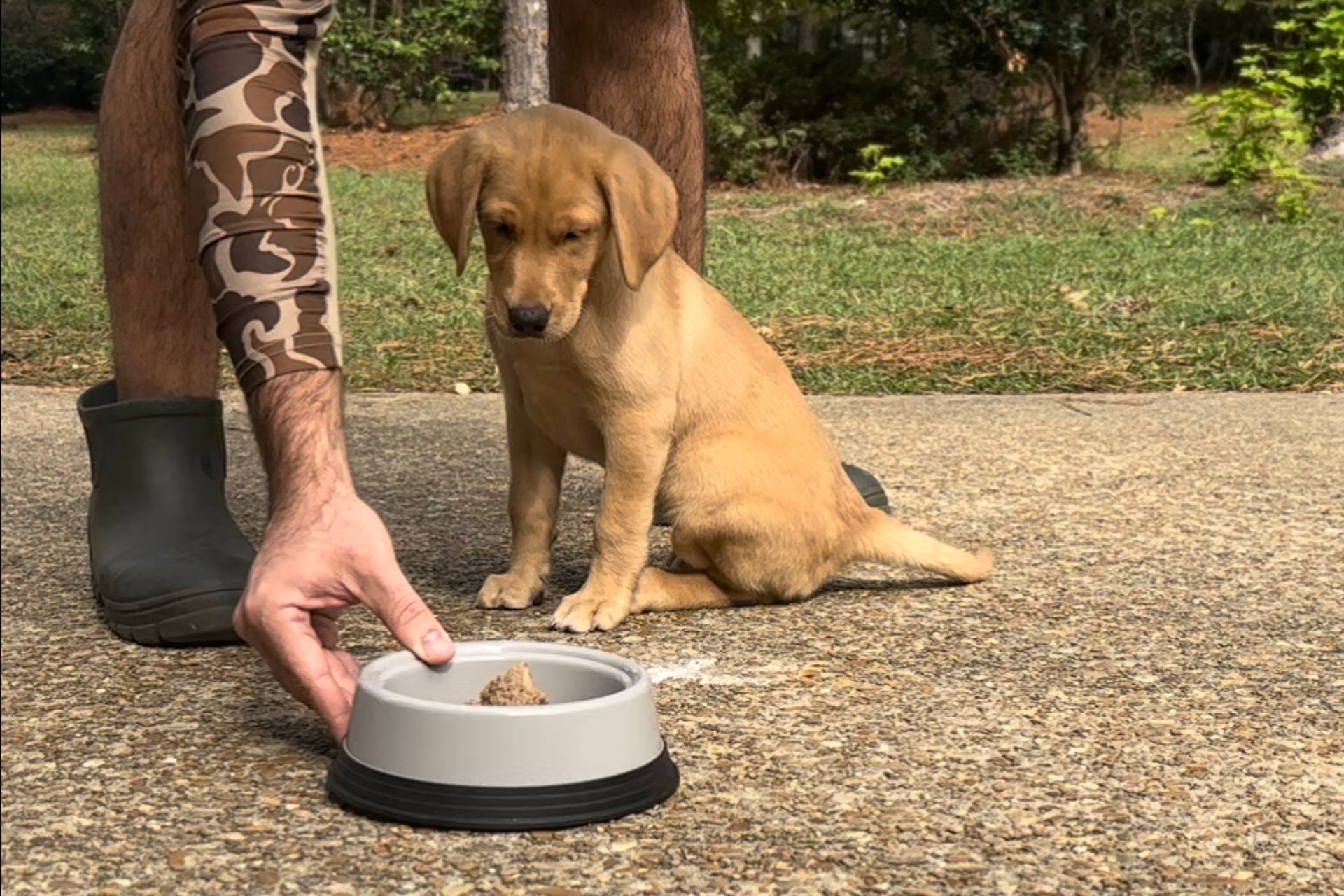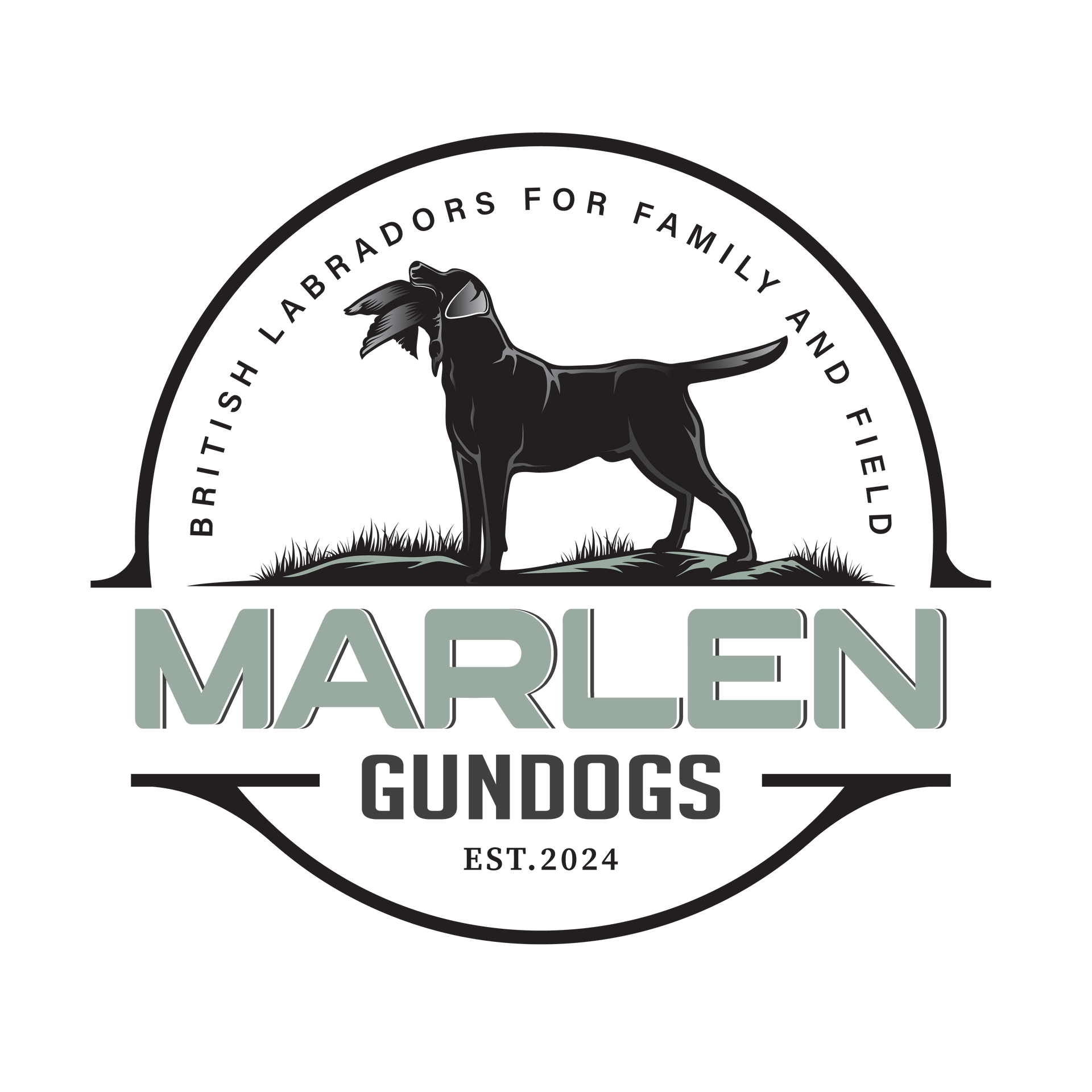Thresholds in Retriever Training
Thresholds in Retriever Training
Harper has been working on marks within 65 yards for several weeks but it’s time to start stretching her out a bit. Today, our marks ranged between 65 and 90 yards. We were also working in a hay field that had limited visibility until the dogs were within 10-20 feet of the dummy depending on where it fell.
Harper’s first two retrieves on the day were at around 65 yards. She marked and picked well, not hesitating a bit while stepping on the dummies. Harper was alternating retrieves with the boys today, Mack and Merle. Our Setup consisted of three – four shot dummy launchers with one shooting left to right at 65-75 yards and the other two shooting right to left at 80-90 yards. After watching Mack and Merle retrieve a few from the longer launcher, it was Harper’s turn to pick a long dummy. Harper marked well from her place stand and didn’t break focus as I called her name to retrieve. Her line was true and fast until she got to 60 yards. Could it have been a threshold?
A threshold is a maximum distance that the dog has been conditioned to go to make the pick. Evidently, it seemed that Harper had started to develop a threshold to this 60 yard distance. It may have been because we had not yet progressed to marking beyond this distance in her training. Dogs are creatures of habit – if you consistently set a dog up to only go to a maximum distance to retrieve a dummy then you are encouraging a behavior that the dog will only need to go a certain distance to find the dummy. Do it too much without varying distances and this behavior will become a habit.
Harper got to this 60 yard threshold and hit an imaginary wall and hunted there aimlessly for a few seconds. Harper, a very intelligent pup, made the decision to press forward to the actual fall area. She struck out beyond the threshold and lined just to the right of the dummy. She actually would have continued further had she not come across the downwind side of the dummy. When she came into the scent cone 10 yards right of the dummy the turned left and hunted straight to the white dummy and made the pick.
There are a few things to consider when determining what caused her to stop then push beyond her threshold. Was it instinct or mental decision to move past this threshold? Did she learn from watching Mack and Merle make several retrieves from that launcher? Was it actually a threshold or did she come across the old scent of the previous 65 yard retrieves that fell upwind just 30 yards left of where she stopped? Was it the preventative measures that we take to prevent this thresholding behavior? The fact is – I don’t actually know for certain what caused her to stop then continue. But I can make assumptions based on her previous training and behavior to aid in determining cause and effect.
Even though we have only been marking to a maximum 65 yards in her training to this point, Harper gets a steady dose of placed dummy retrieves at a significantly longer distance. Placed retrieves are memories, unknowns, or blinds. Most of which have been done with a lining aid such as a mowed lane, wood line, hedge row, road bed, wakling path, etc. We utilize these placed retrieves as a preventative measure on days that we are primarily working on marks by starting and/or ending the session with longer placed retrieves.



